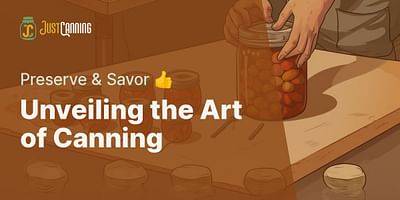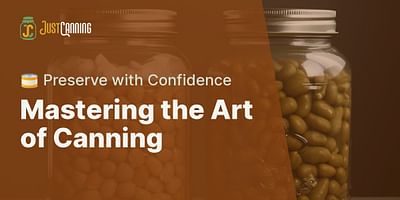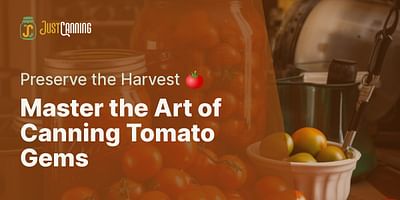Helen Baker is a retired nutritionist who has spent her life promoting healthy eating habits. She is an expert in canning and loves to share her knowledge on preserving nutrients in canned foods.
Welcome to the wonderful world of canning food at home! As a beginner, you might find the process a bit daunting, but don't worry, I'm here to guide you through it. There are two main methods of canning: water bath canning and pressure canning. The former is great for high-acid foods like fruits and pickles, while the latter is ideal for low-acid foods such as vegetables and meats.
Why should you consider home canning? Well, it's a fantastic way to preserve the freshness and nutritional value of your favorite foods, not to mention it's economical and environmentally friendly. Plus, there's something incredibly satisfying about seeing a shelf full of food you've canned yourself.
As for the canning process, it involves several steps: preparing the food and jars, filling the jars with food, processing them in a canner, and then storing them properly. But don't fret, we'll delve into these steps in detail later.
And what about steam canning? This technique, while less commonly used, can be a real time-saver. It uses the heat of steam to process the jars, which can be quicker than traditional methods. But how to use a steam canner? Stay tuned, as we'll cover steam canning techniques, times, and even some delicious steam canning recipes.

Your Home Canning Toolkit: Must-Have Gear for Preserving 🥫
Essential Canning Equipment
- Canning Jars: These are special jars designed for canning and preservation. They come in various sizes, with quart and pint sizes being the most common.
- Canning Lids and Bands: Lids are crucial for creating an airtight seal, and bands hold the lids in place during the canning process. Remember, lids are single-use, but bands can be reused.
- Jar Lifter: This tool is essential for safely removing hot jars from the canner.
- Canning Funnel: A canning funnel makes it easy to fill jars neatly, ensuring minimal spillage and waste.
- Bubble Remover: This tool is used to remove air bubbles from the jars before sealing. Removing air bubbles is important to ensure proper preservation and to avoid potential spoilage.
- Water Bath Canner or Pressure Canner: These are the devices in which you'll process your jars. A water bath canner is used for high-acid foods like fruits and pickles, while a pressure canner is used for low-acid foods like vegetables and meats.
Your First Home Canning Adventure: Step-by-Step Guide 🍓🥒
Ready to embark on your home canning journey? Let's dive into the step-by-step process of canning food at home. First, you need to prepare your food. This may involve peeling, chopping, or cooking, depending on the recipe. Don't forget to sterilize your canning jars and lids too! If you're new to this, you might find our beginner's guide to using a pickling kit helpful.
Next, it's time to fill your jars. Using a funnel, pack the food into the jars, leaving the appropriate headspace. Remove any air bubbles with a bubble remover or a non-metallic spatula. Wipe the rim of the jar, place the lid on top, and screw on the band until it's fingertip-tight.
Now, we move on to processing. This is where your canning machine comes into play. If you're using the steam canning technique, make sure you follow the steam canner instructions carefully. Our comprehensive guide on steam canning can be a great resource. Steam canning times vary depending on the recipe and jar size, so be sure to check the specifics for your recipe.
Finally, once the jars have cooled, check the seals. If the lid doesn't flex up and down, it's sealed. Now, you can store your jars in a cool, dark place and enjoy your home-canned food for months to come. If you're wondering about reusing canning lids, check out our article on whether you can reuse canning lids. Remember, practice makes perfect. Happy canning!
If you're a visual learner, this video tutorial can be a great help. It provides a simple and beginner-friendly canning process that you can follow along.
Now that we've covered the basics of canning at home, let's delve deeper into some specific recipes you can try out. Remember, the key to successful canning is practice and patience.















